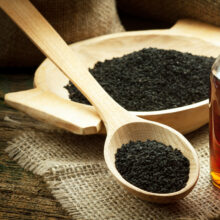Get the Dish on “Diets” & Discover the Truth About Gluten-Free
- Published: Wednesday, March 4th 2015
- in Nutrition
by Kimberly Gomer, MS, RD, Director of Nutrition at Pritikin Longevity Center & Spa
 Raw diets. Gluten-free diets. Paleo diets. If you want a diet, you’ll have no problem finding one. They’re everywhere, from the Internet to the magazine stands at the supermarket. Diets are known for being strident. “Don’t eat anything cooked!” admonish some. “Stay away from all breads!” insist others. So it’s important to ask: What kind of diet is truly healthy? What kind of diet is good for not only shedding excess weight but also preventing chronic conditions like type 2 diabetes, hypertension, heart disease, and some cancers?
Raw diets. Gluten-free diets. Paleo diets. If you want a diet, you’ll have no problem finding one. They’re everywhere, from the Internet to the magazine stands at the supermarket. Diets are known for being strident. “Don’t eat anything cooked!” admonish some. “Stay away from all breads!” insist others. So it’s important to ask: What kind of diet is truly healthy? What kind of diet is good for not only shedding excess weight but also preventing chronic conditions like type 2 diabetes, hypertension, heart disease, and some cancers?
An excellent source for learning the key attributes of a healthy diet is the World Health Organization (WHO). In WHO’s Global Strategy on Diet, Physical Activity, and Health, updated in 2014, leading nutrition and healthy-lifestyle researchers across the globe determined that a healthy diet contains an abundance of:
- Fruits
- Vegetables
- Legumes (e.g. lentils, beans)
- Whole grains (e.g. unprocessed maize, millet, oats, wheat, brown rice)
“Approximately 1.7 million deaths worldwide are attributable to low fruit and vegetable consumption,” notes WHO. According to WHO, the foods we need to curtail are:
- Free sugars. “Free sugars are added to foods by the manufacturer, cook or consumer, and can also be found in sugars naturally present in honey, syrups, fruit juices and fruit juice concentrates,” states WHO.
- “Unsaturated fats (e.g. found in fish, avocado, nuts, sunflower, canola and olive oils) are preferable to saturated fats (e.g. found in fatty meat, butter, palm and coconut oil, cream, cheese, ghee and lard). Industrial trans fats (found in processed food, fast food, snack food, fried food, frozen pizza, pies, cookies, margarines and spreads) are not part of a healthy diet,” points out WHO.
- “People are often unaware of the amount of salt they consume,” states the World Health Organization. “In many countries, most salt comes from processed foods (e.g. ready meals, processed meats like bacon, ham and salami, cheese and salty snacks) or from food consumed frequently in large amounts (e.g. bread).”
Gluten-Free Diets
Of late, we have had several guests at Pritikin ask if they should adopt a gluten-free diet, and if gluten-free diets are healthier. Gluten-free foods are for people who have celiac disease, a condition in which you lack the digestive capability to break down the protein gluten, which is found in wheat, rye, and barley products. But it’s important to understand that just because a food is “gluten-free” does not mean it is healthy overall. Remember “fat free” foods that were loaded with sugar and “sugar-free” foods that were full of butter and other heart-damaging fats?
Similarly, many of the “gluten-free” products on the market these days, such as cereals, breads, and pastas, are just as high in calorie density and sodium as regular gluten-containing products. Sometimes, they have an even worse nutrition profile. If you think you have celiac disease, make an appointment to talk with your doctor. If you find out you do, study “gluten free” food labels just as carefully as you study regular foods.
Want to learn more about popular diets and discover if they are rad or just passing fads? Click here!


